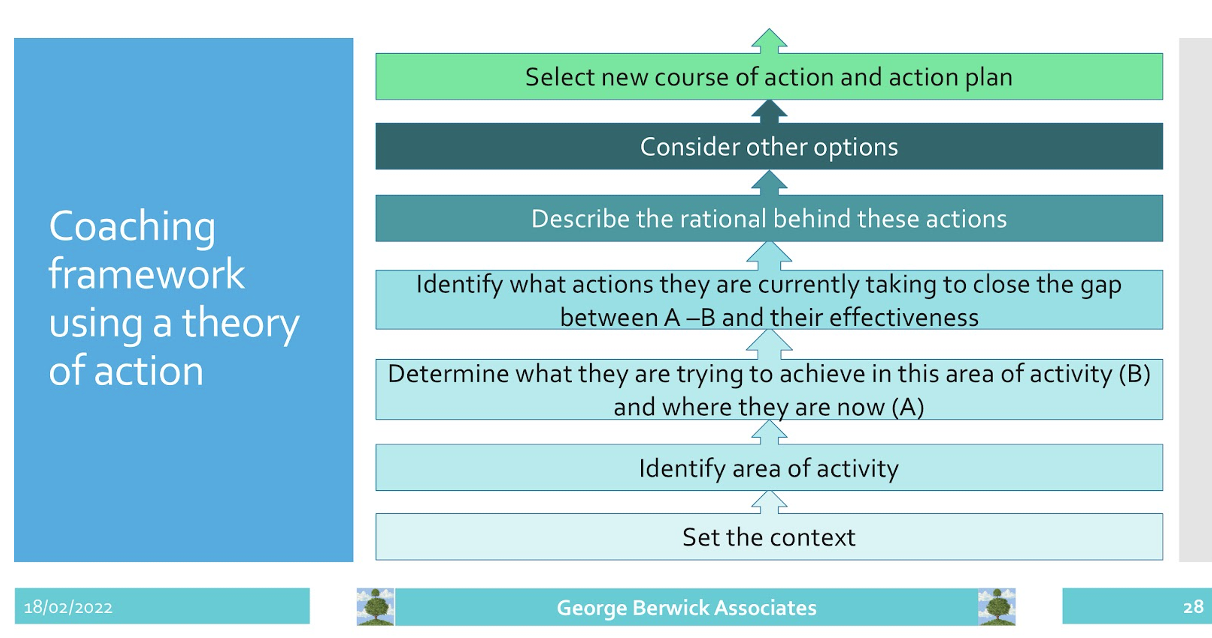Think Pieces
School transformation – early leadership coaching (Pt 4 in a series)

We were soon called upon to replicate our success with school transformation. This ushered in fresh obstacles, not least convincing head teachers to co-operate.
It was not long before other schools in the borough began to show interest in our work with the boys’ secondary school so George Gyte, Director of Education, increased the number of schools we worked with. He was especially interested in offering my own work as a coach to headteachers of other schools. The process he used to identify potential head teachers for me to coach contained an element of opting in but was primarily based on their performance, with those with the weakest performance first on the list.
Making the initial contact
This initiative was not as successful as with the boys’ school, as some of the schools identified in this way did not take up the offer because they saw my potential arrival as an indication that they could be failing and thought that:
- As I came from an OFSTED-rated outstanding boys secondary school with an intake that was the national average for free school meals (the measure of social disadvantage used then by the government in England) I knew little about the issues they faced – time and place.
- Their time could be better used elsewhere.
- We would not get along – disposition.
For those that choose to work with us, sometimes just meeting the headteacher for the first time at the arranged time proved problematic. On some occasions they were not able to see me at our agreed appointment. Even though I could often see the headteacher in the distance, they were unable to leave what they were engaged in to meet me.
If this situation did not change during our allocated time I would politely thank the receptionist and tell them that I understood that the head teacher was too busy to see me today, however, I would be attending our next appointment. Often this resulted in us meeting the next time, but not in all cases – organisational capital.
Later I learnt that this was not rudeness on their behalf but that often some emergence would occur which placed our meeting way down on their list of priorities.
Engaging in a constructive conversation
Making contact was only the first stage in the process; the next was to convince them that I was not there to spy on them for the local authority or tell them how to do their job. Rather, I was there to help them solve some of the problems they faced by working with them on a solution.
It’s true to say that in some cases we never got beyond that point. For others, slowly working together during my one-hour visit on their own agenda, we built the trust and confidence required, and our relationship became effective – moral capital.
I used a coaching framework for our sessions which resembled the theory of action we have described previously in this journal. It followed the following sequence –
- Context setting which included reference to the specifics of time and place. Especially any recent or pending changes.
- Identify the area of activity they wished to improve and why.
- Clarify what they are trying to achieve (B)? – The espoused theory – and identify where they were now (A).
- Identify what action they were currently taking to close the gap (A to B).
- Describe the rational they used for doing so – their theory in use.
- Consider the pros and cons of a whole range of other options for closing the gap between A-B.
- Decide upon the best course of action for the future and turned that into an action plan.
This whole process was designed to allow them to experience a double loop learning process rather than the single loop most of them had been using up to then.
In this fourth article in our series describing how we developed our approach to school transformation we have highlighted:
- The difficulties inherent in assigning coaches to school leaders.
- The need to develop a trusting relationship between the coach and the school leader.
- How the coaching process we used related to the theory of action.
As a result, our approach to school improvement places considerable emphasis on brokering the appointment of coaches to school leaders, teachers or other members of staff, creating an open and trustworthy relationshipbetween them and using a coaching framework which mirrors the theory of action, allowing for purposeful knowledge to be transferred between school leaders in a collaborative way.
The next article in this series will describe how this approach worked in practice.
Take care and stay safe
George

